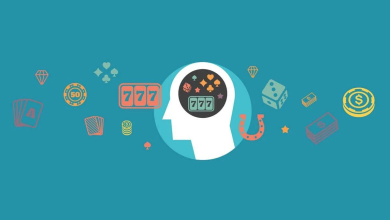Why Traders and Gamblers Love Risk – Neuroscience Explains

Traders and gamblers love risk, but why do they take such chances despite knowing the possibility of loss? The answer lies in how our brains are wired. Neuroscientific research shows that specific brain systems, including the reward circuitry, activate when people make risky decisions. Let’s dive into the neuroscience behind why traders and gamblers love risk and how these neural processes influence their actions.
The Science of Risk-Taking in Trading and Gambling
Traders and gamblers regularly engage in high-risk activities where uncertainty drives their choices. Whether placing a bet or buying stocks, the prospect of reward makes risk-taking appealing. But what motivates this behaviour?
At the core of it is dopamine, a neurotransmitter that governs pleasure, motivation, and reward. When traders or gamblers face uncertainty, their brains release dopamine, which creates excitement and motivation. Studies show that our brains react more strongly to uncertain rewards than to predictable ones. The mere possibility of winning triggers a stronger response than a guaranteed outcome.
Dr John Coates, a neuroscientist and former trader, explains, “The possibility of reward, regardless of the likelihood, excites the brain’s reward system.” The anticipation of a payoff, even when uncertain, often outweighs the fear of losing.
ALSO READ: Success Stories: How Gambling and Trading Changed Lives in Gauteng
How Dopamine Drives Reward and Risk-Taking
Dopamine releases not only when we achieve a goal but also when we anticipate one. This explains why taking risks feels rewarding. In both trading and gambling, this anticipation can lead to a rush of dopamine, even when the risks involved are significant.
When people trade or gamble, they don’t just focus on the immediate result; they also focus on the potential of future success. Dr Coates’ research reveals that traders who succeed in the market show higher levels of testosterone, which increases their appetite for risk. On the other hand, failure raises cortisol, the stress hormone, making traders more risk-averse. These hormonal fluctuations explain why some traders take greater risks after success, while others become more cautious after experiencing losses.
Loss Aversion and the Emotional Tug of Risk
Loss aversion: The tendency to feel the pain of loss more acutely than the joy of gain plays a significant role in both gambling and trading.
When traders or gamblers face losses, they often feel the urge to recover those losses by taking greater risks. For example, gamblers may chase losses by making bigger bets, while traders may take on excessive risk in an attempt to recoup their losses. This emotional reaction to losing often drives further risk-taking behaviour.
The amygdala, the brain’s emotional control centre, plays a key role here. It becomes highly active when individuals face potential losses, triggering fear and anxiety. This emotional response leads people to take bigger risks in the hope of turning their fortunes around.
The Psychology Behind Risk-Taking Decisions
Experts believe the brain processes risk-taking similarly to addiction. Both gambling and trading activate the brain’s reward circuits, stimulating dopamine when people anticipate a win. However, the same pathways also become involved in addictive behaviours, making risk-taking harder to resist.
Dr Luke Clark, a leading researcher in gambling psychology, discusses the “near-miss effect”. This happens when gamblers and traders come close to winning but fall short. “Near-misses can trigger dopamine release, making it feel like success is just around the corner,” Dr Clark explains. This creates an illusion of skill, encouraging people to keep taking risks even after experiencing losses.
READ MORE: How to Keep Your Gambling and Trading Activities Secure Online
Why Risk-Taking Is So Addictive
Risk-taking in trading and gambling feels thrilling because the biological processes that drive reward-seeking behaviour also make these activities addictive. The anticipation of a reward keeps people engaged, even when the odds are against them. This cycle of risk-taking, excitement, and reward is hard to break, especially when the brain constantly seeks that next dopamine rush.




